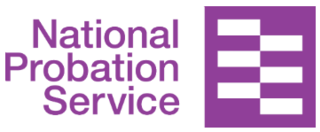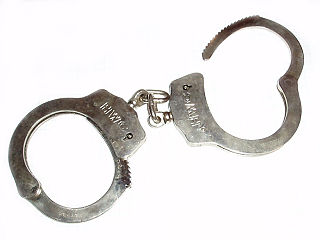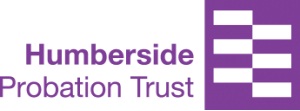
The Youth Criminal Justice Act is a Canadian statute, which came into effect on April 1, 2003. It covers the prosecution of youths for criminal offences. The Act replaced the Young Offenders Act, which itself was a replacement for the Juvenile Delinquents Act.

A criminal record is a record of a person's criminal convictions history. The information included in a criminal record and the existence of a criminal record varies between countries and even between jurisdictions within a country. In most cases it lists all non-expunged criminal offences and may also include traffic offences such as speeding and drunk driving. In most countries a criminal record is limited to unexpunged and unexpired actual convictions, while in some it can also include arrests, charges dismissed, charges pending and charges of which the individual has been acquitted. The term rap sheet refers to Record of Arrest and Prosecution, similar to a criminal record.

The Probation Service for England and Wales is a statutory criminal justice service, mainly responsible for the supervision of offenders in the community and the provision of reports to the criminal courts to assist them in their sentencing duties. It was established in its current form by the Criminal Justice and Court Services Act in April 2001, but has existed since 1907 as a set of area-based services interacting at arm's length with central government.

In England and Wales, a magistrates' court is a lower court which hears matters relating to summary offences and some triable either-way matters. Some civil law issues are also decided here, notably family proceedings. In 2010, there were 320 magistrates' courts in England and Wales; by 2020, a decade later, 164 of those had closed. The jurisdiction of magistrates' courts and rules governing them are set out in the Magistrates' Courts Act 1980.

The Rehabilitation of Offenders Act 1974 of the UK Parliament enables some criminal convictions to be ignored after a rehabilitation period. Its purpose is that people do not have a lifelong blot on their records because of a relatively minor offence in their past. The rehabilitation period is automatically determined by the sentence. After this period, if there has been no further conviction the conviction is "spent" and, with certain exceptions, need not be disclosed by the ex-offender in any context such as when applying for a job, obtaining insurance, or in civil proceedings. A conviction for the purposes of the ROA includes a conviction issued outside Great Britain and therefore foreign convictions are eligible to receive the protection of the ROA.
A police caution is a formal alternative to prosecution in minor cases, administered by the police in England and Wales. It is commonly used to resolve cases where full prosecution is not seen as the most appropriate solution. Accepting a caution requires an admission of guilt.
In the common law legal system, an expungement proceeding is a type of lawsuit in which an individual who has been arrested for or convicted of a crime seeks that the records of that earlier process be sealed or destroyed, making the records nonexistent or unavailable to the general public. If successful, the records are said to be "expunged". Black's Law Dictionary defines "expungement of record" as the "Process by which record of criminal conviction is destroyed or sealed from the state or Federal repository." While expungement deals with an underlying criminal record, it is a civil action in which the subject is the petitioner or plaintiff asking a court to declare that the records be expunged.
A reprimand is a severe, formal or official reproof. Reprimanding takes in different forms in different legal systems. A reprimand in custody may be a formal legal action issued by a government agency or professional governing board. It may also be an administrative warning issued by an employer or school.
Juvenile law pertains to those who are deemed to be below the age of majority, which varies by country and culture. Usually, minors are treated differently under the law. However, even minors may be prosecuted as adults.
The youth justice system in England and Wales comprises the organs and processes that are used to prosecute, convict and punish persons under 18 years of age who commit criminal offences. The principal aim of the youth justice system is to prevent offending by children and young persons.
Indefinite imprisonment or indeterminate imprisonment is the imposition of a sentence of imprisonment with no definite period of time set during sentencing. It was imposed by certain nations in the past, before the drafting of the United Nations Convention against Torture (CAT). The length of an indefinite imprisonment was determined during imprisonment based on the inmate's conduct. The inmate could have been returned to society or be kept in prison for life.

Crime in New Zealand encompasses criminal law, crime statistics, the nature and characteristics of crime, sentencing, punishment, and public perceptions of crime. New Zealand criminal law has its origins in English criminal law, which was codified into statute by the New Zealand parliament in 1893. Although New Zealand remains a common law jurisdiction, all criminal offences and their penalties are codified in New Zealand statutes.

Canadian criminal law is governed by the Criminal Code, which includes the principles and powers in relation to criminal sentencing in Canada.
Lancashire Probation Trust is a criminal justice agency responsible for punishing and rehabilitating offenders in Lancashire, England.

Sentencing in England and Wales refers to a bench of magistrates or district judge in a magistrate's court or a judge in the Crown Court passing sentence on a person found guilty of a criminal offence. In deciding the sentence, the court will take into account a number of factors: the type of offence and how serious it is, the timing of any plea of guilty, the defendant's character and antecedents, including their criminal record and the defendant's personal circumstances such as their financial circumstances in the case of a fine being imposed.

Humberside Probation Trust was a criminal justice agency. Humberside was one of 35 probation trusts within England and Wales that were part of the National Offender Management Service (NOMS) and a department of the Ministry of Justice.
The New Zealand Parole Board is an independent statutory body established in 2002 that considers offenders for parole. Its task "is to undertake an assessment of the risk that long-term sentenced offenders might pose to the safety of the community if they were to be released before the end of their sentence". The Board also sets conditions of release for offenders so their reintegration back in to the community can be effectively managed. Once the conditions are set it becomes the responsibility of Community Corrections to manage the offender." 'Long term' is defined as more than 24 months. Short-term prisoners are automatically released after serving half their sentence.
The New Zealand Probation Service is a branch or service of the New Zealand Corrections Department. Established in 1886, its role is to manage offenders sentenced to community based sentences such as home detention, community detention and intensive supervision. The Service also manages prisoners in the community who have been released on parole and offenders on release conditions at the end of their prison sentence. According to Corrections website, in 2014 the Service was looking after approximately 30,000 offenders in the community. The Probation Officer's role is described as "work(ing) with people on probation to motivate them to make changes in their lives. This may include attending programmes to address violence, alcohol and drug abuse or driving offences."
The youth justice system in New Zealand consists of organisations and processes that deal with offending by children aged 10–13 years and young people aged 14–16 years. These differ from general criminal processes, and are governed by different principles.
The Lammy Review is a 2017 review on discrimination within the policing and criminal justice systems in the UK, led by David Lammy and commissioned by David Cameron and Theresa May. The Lammy Review found significant racial bias in the UK justice system.











